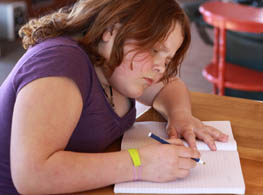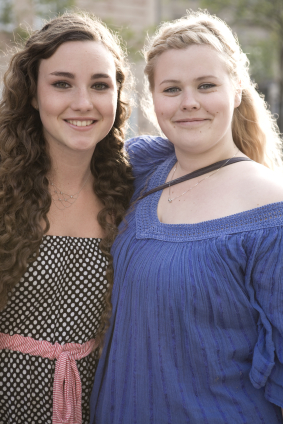 |
BlubberBusters Tips
from Lucy (Click here for past week's tips) |
||||||||||||||||||||||||||||||||||||||||||||||
FOOD TRIGGERSWHAT THEY ARE AND HOW TO AVOID THEMWhat are Triggers? Triggers are events or cues that cause you to feel certain urges to eat when you aren't hungry. They overpower your mind so much that you can't resist the temptation to eat the food. The trigger causes you to eat a problem food, a snack, or large amounts at a meal. Triggers can be visual (something you see), sensory (something you smell), or some event that tugs at your brain urging you to eat even when you aren't even hungry. These triggers prompt the emotional part of your brain to "cave" and eat the food in part to comfort or cope with some emotion you might be experiencing. Other times, nothing more than passing by a bakery or going to a baseball game triggers the urge to want a certain food. Here are food trigger examples: 1) Whenever you have money in your pocket, you end up going to the store on the corner to buy candy, 2) When you pass by the donut store on the way home from school, you can never resist getting a donut, 3) Whenever your brother puts his soda pop in the fridge, you always drink it. Money in your pocket, the donut store, and your brother's soda pop in the fridge are your problem food triggers. These triggers tug at your brain urging you to eat even when you aren't even hungry A Plan to Avoid the Triggers: To avoid those triggers do not keep extra money in your pocket, take a new route home from school, and ask your brother to keep his soda pop in the garage. It is much easier to avoid your triggers, if the problem food is not in front of you. WHAT YOU CAN DO. It's a good idea to: 1) Write down your triggers, and 2) Write down your plan ahead of time to avoid each trigger Let's take a look at several more triggers and plans. After reading them, take out a piece of paper or write in your journal your own triggers and a plan to avoid each trigger. Then when you experience that situation or event, you can follow your plan. WHAT A GREAT IDEA!
Learning to identify your triggers and making a plan ahead of time can help you practice healthy coping mechanisms. Remember, using food to soothe emotions is an unhealthy coping mechanism. If you cave in to your trigger, don't fret about it. When you see or feel a trigger coming on next time, try again to follow your plan. YOU CAN DO IT! IT JUST TAKES PRACTICE. The more you follow your plan to use a distraction or activity to avoid your trigger, the easier it will become. MORE WAYS TO AVOID YOUR TRIGGERS 1. Use Your Distractions/Fun Activities Jar - Write down a fun activity you can do or like to do on a piece of paper and put in a small box or what we call a Distractions/Activities Jar.
Write down several fun things on separate pieces of paper and put in your distractions/activities jar. - When you experience one of your emotions and you feel the urge to eat, rather than eat, draw out one of the activities from your distraction jar and GO DO IT! Usually, if you can resist eating for a few minutes with a distracting activity, the craving will go away. TRY IT! YOU CAN DO IT! - Remember, replacing food with activities/distractions is a HEALTHY WAY to cope with your emotion. 2. Get junk food out of the house! Out of site, out of mind! It's a good idea to remove junk food from your house, that way you won't be so tempted. Be mindful. THINK BEFORE YOU EAT! Are you really hungry? If not, DON'T EAT. THINK DISTRACT! 3. Surround yourself with SUPPORTIVE PEOPLE. It sometimes helps to talk about why you feel the way you do. Talk to a You can also get lots of ideas and support from other kids on this site. Visit the Comfort Eating Board to learn how other kids deal with emotional eating. The chatroom, pre-teen, and teen bulletin boards are also great sources of help and information. You can interact with other kids and teens and read how they conquer their struggles with weight. Don't forget, every Wednesday "Lucy" is in the chat room to answer questions too!Time for a FUN DISTRACTION! HAVE FUN!!! And, don't forget to SMILE! You never know who's day you're making! Let us know what you think of this tip. Make this a healthy week! (Click here for past week's tips) |
|||||||||||||||||||||||||||||||||||||||||||||||
Please ask your
healthcare provider if these tips are right for you and please read our disclaimer.

 These can be anything you like to do like: go for a walk, paint or draw a picture, relax with a good book, dance in my room, chat with a friend, help a neighbor, volunteer at the animal shelter, play the piano, keep a journal, and so forth.
These can be anything you like to do like: go for a walk, paint or draw a picture, relax with a good book, dance in my room, chat with a friend, help a neighbor, volunteer at the animal shelter, play the piano, keep a journal, and so forth.